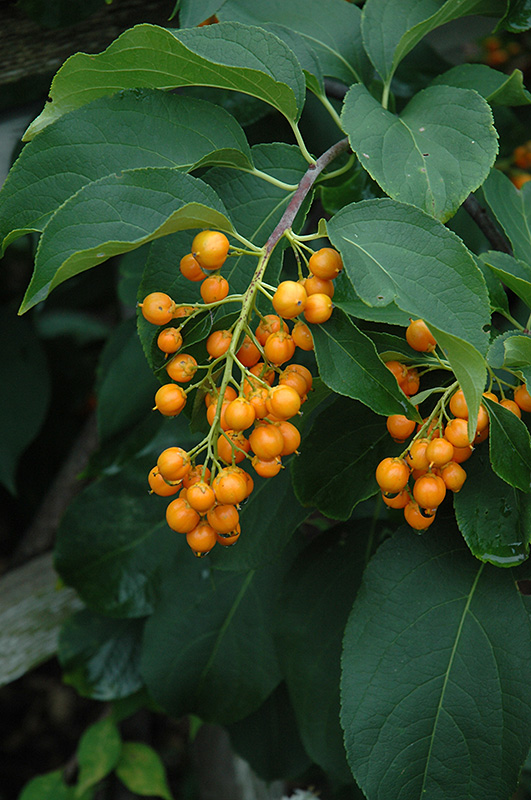The Plant Finder
Have a specific vision in mind for your outdoor space?
Search our database and find the perfect plants to meet your gardening needs.
Hercules And Diane Bittersweet
Celastrus scandens 'Hercules And Diane'
Height: 20 feet
Spread: 24 inches
Sunlight:
![]()
Hardiness Zone: 2b
Description:
An exceptional vine for screening or garden detail, known for its very showy orange to red fruit in fall, and good fall color; this is a pairing of one male and one female plant grown together to guarantee effective fruit production
Ornamental Features
Hercules And Diane Bittersweet is primarily grown for its highly ornamental fruit. It features an abundance of magnificent orange berries in mid fall. It has dark green deciduous foliage. The round leaves turn yellow in fall.
Landscape Attributes
Hercules And Diane Bittersweet is a multi-stemmed deciduous woody vine with a twining and trailing habit of growth. Its average texture blends into the landscape, but can be balanced by one or two finer or coarser trees or shrubs for an effective composition.
This woody vine will require occasional maintenance and upkeep, and can be pruned at anytime. It is a good choice for attracting butterflies to your yard, but is not particularly attractive to deer who tend to leave it alone in favor of tastier treats. Gardeners should be aware of the following characteristic(s) that may warrant special consideration;
- Spreading
Hercules And Diane Bittersweet is recommended for the following landscape applications;
- Hedges/Screening
- General Garden Use
Planting & Growing
Hercules And Diane Bittersweet will grow to be about 20 feet tall at maturity, with a spread of 24 inches. As a climbing vine, it tends to be leggy near the base and should be underplanted with low-growing facer plants. It should be planted near a fence, trellis or other landscape structure where it can be trained to grow upwards on it, or allowed to trail off a retaining wall or slope. It grows at a fast rate, and under ideal conditions can be expected to live for approximately 20 years. This is a self-pollinating variety, so it doesn't require a second plant nearby to set fruit.
This woody vine should only be grown in full sunlight. It is very adaptable to both dry and moist locations, and should do just fine under average home landscape conditions. It is considered to be drought-tolerant, and thus makes an ideal choice for xeriscaping or the moisture-conserving landscape. It is not particular as to soil type or pH, and is able to handle environmental salt. It is highly tolerant of urban pollution and will even thrive in inner city environments. This is a selection of a native North American species.

